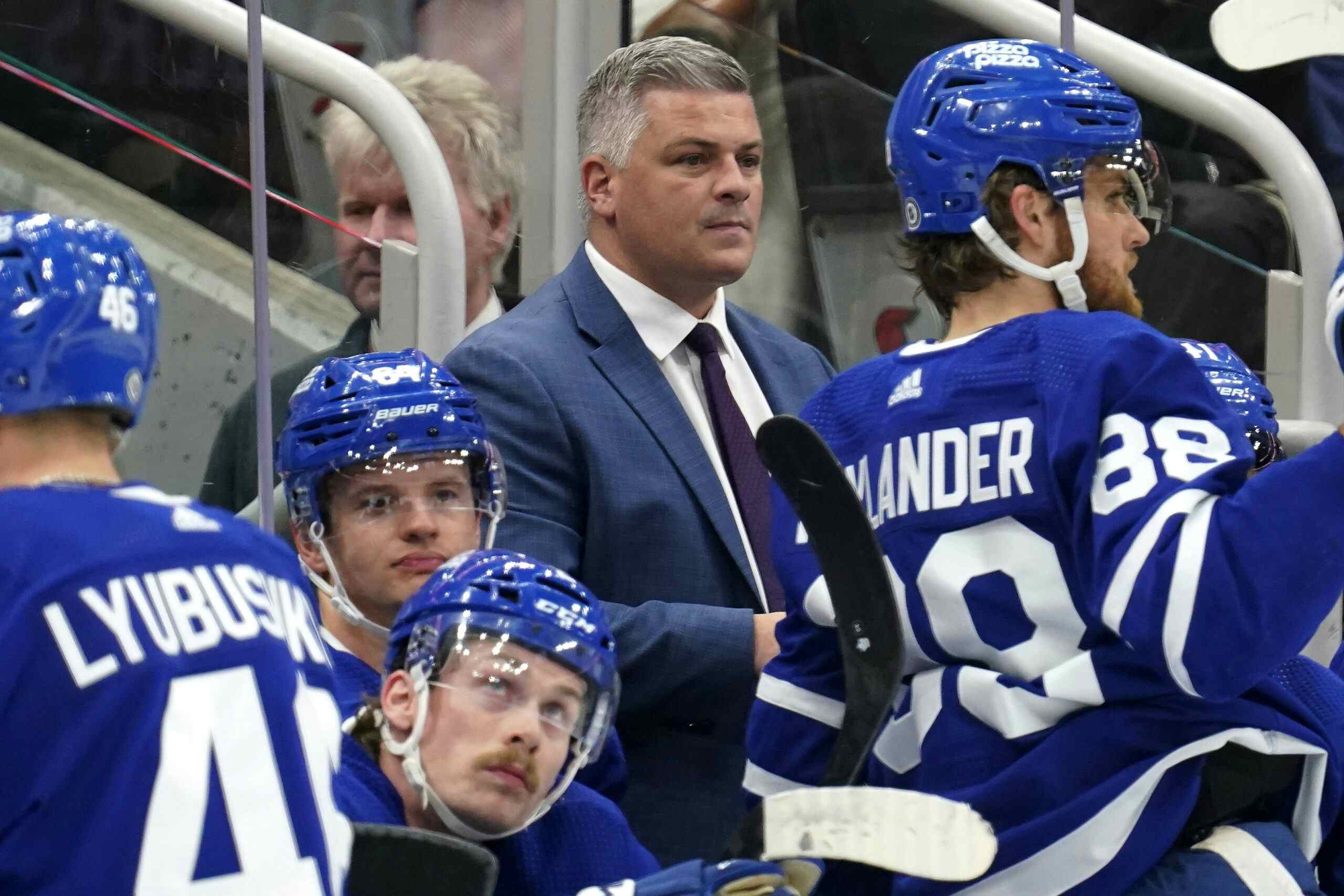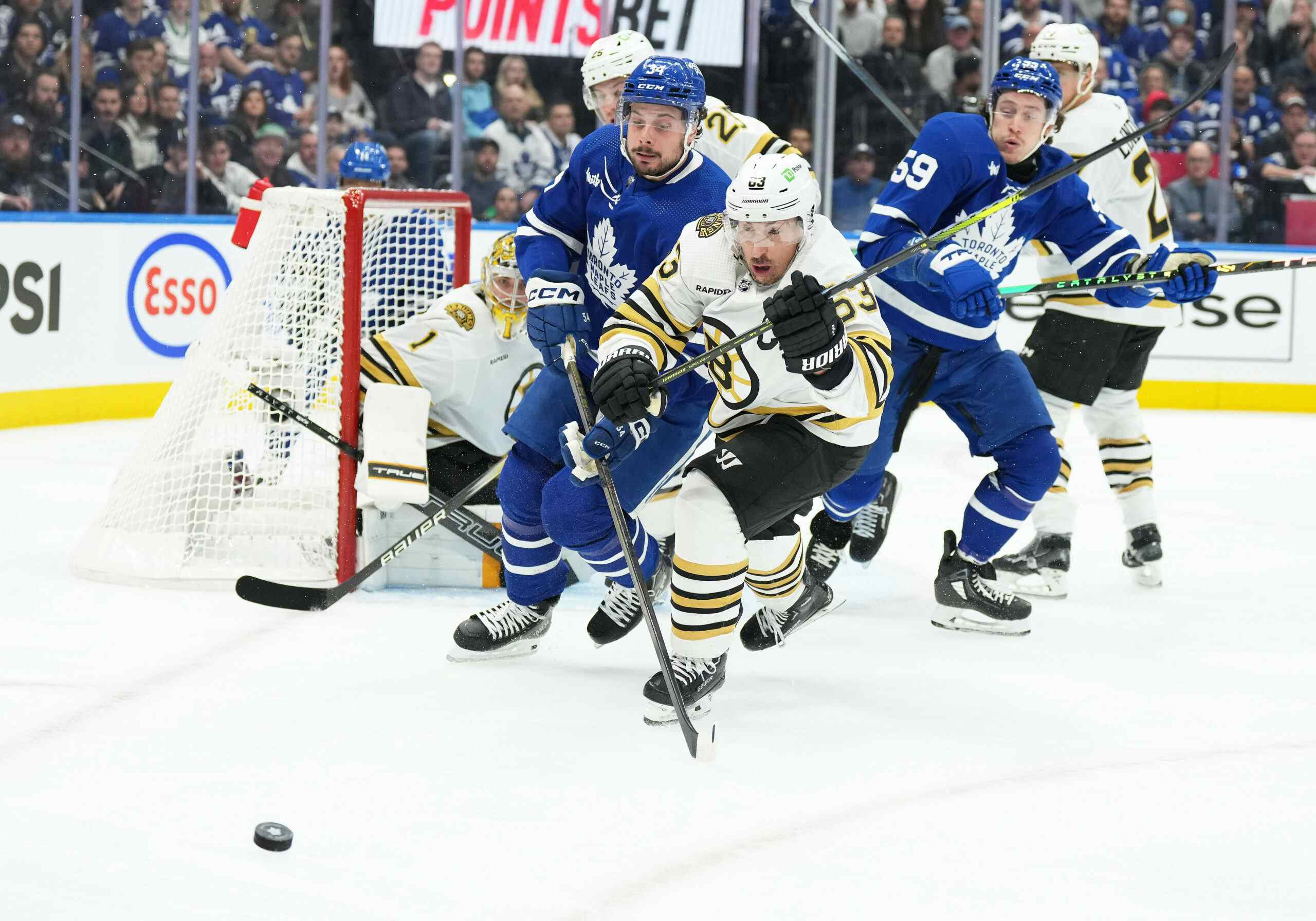What Will Martin Marincin’s Next Contract Be?
Martin Marincin is the last remaining Toronto Maple Leaf with an arbitration hearing scheduled. Peter Holland and Frank Corrado both signed short-term contracts with the team shortly before their arbitration dates, while Marincin is set for Tuesday, August 2. Before Holland’s hearing, I took a shot at guessing what his AAV might wind up being based on the contracts signed by players with similar statistics over the previous few seasons. Holland ended up signing well below my guess, but I think the general method is still sound (it’s similar to how arbitrators make their decisions), so I’m going to make an attempt at estimating Marincin’s next contract value in this post.
MARINCIN AT A GLANCE
Before going any further, let’s take a quick look at a few of Marincin’s statistics over the past two seasons:
| GP | PTS | CF% | CF/60 Rel | CA/60 Rel | CF% Rel |
| 106 | 12 | 51.5% | -0.3 | -3.9 | +1.6% |
Marincin has been a divisive player at times. Statistically-focused fans point to Marincin’s strong ability to drive play as proof of his value, while traditionalists see a player who doesn’t look like he’s doing much on the ice and who struggles to put up points. Both of those things are reflected in the chart posted above.
Marincin’s scoring has certainly been quite low. Over the past two seasons, he ranks 157th in points per game out of the 161 defencemen with at least 100 games played. There are virtually no NHLers who score as infrequently as Marincin does. Even if there are other aspects of the game that he excels at, it’s worth questioning whether a player who scores in the bottom 3% among regular defencemen in the league ought to count as a quality NHLer.
There certainly are parts of the game where Marincin shines. His ability to drive shot attempts for his own team is not particularly good, but it’s not bad either; his Corsi For has been quite average relative to his teammates over the past couple of seasons. His ability to reduce shot attempts against his own team is quite strong, however. Marincin does a lot of good things on the ice very quietly, in terms of his positioning and his ability to break up plays.
He’s certainly an unusual player, which we’ll see even more clearly once we look at the list of comparable players that I collected.
CONTRACT COMPARABLES
To collect potential comparable contracts for Martin Marincin, I used the following criteria:
- players with at least 90 games played in their 22 and 23-year-old seasons
- who scored 0.2 points per game or less
- in the previous 5 seasons
I had originally intended to use more strict criteria, including time on ice, but the list that resulted from my initial criteria was so small that there was no point in fine-tuning the details.
| Player | GP | PTS | TOI | PTS/GP | TOI/GP | 24 yr AAV | Age Signed |
| Brenden Dillon | 128 | 25 | 2714 | 0.2 | 21.2 | $1.25M | 24 |
| Jonathon Merrill | 113 | 19 | 2151 | 0.17 | 19.0 | $1.14M | 24 |
| Erik Gudbranson | 141 | 22 | 2583 | 0.16 | 18.3 | $2.5M | 23 |
| Martin Marincin | 106 | 12 | 1855 | 0.11 | 17.5 | ??? | 24 |
| Alex Petrovic | 99 | 20 | 1656 | 0.2 | 16.7 | $1.05M | 23 |
| Brian Lashoff | 106 | 11 | 1634 | 0.1 | 15.4 | $0.725M | 23 |
As you can see, the list of comparable players is just five names long. It’s unusual for a player who scores such a low volume of points to get a regular spot on an NHL roster for multiple consecutive seasons, especially at such a young age. That’s why there are so few players on this list.
It’s difficult to figure out if anyone here is actually a particularly good comparable for Marincin. Dillon, for example, played 4 minutes more per game and scored points at nearly twice Marincin’s rate.
The closest player to Marincin in terms of points is Brian Lashoff, who played just 11 games in his 24-year-old season, and has been a minor leaguer since then.
The closest player to Marincin in terms of ice time is Erik Gudbranson, whose salary is by far the highest of the players listed here. However, his contract is likely more of a reflection of his status as a 3rd overall pick rather than anything to do with his value on the ice, which makes him a poor comparison to Marincin.
When I tried to estimate how much Peter Holland would sign for, I tried a number of different ways to average the money his comparable players made. However, I don’t think that really works here, because even on this small list of comparables, there are pretty big differences between these players, and at any rate there just aren’t very many of them.
Looking at this list, I think there’s a good argument that Marincin ought to get more money than Lashoff based on the fact that Marincin plays about 2 more minutes per night and will also be a year older when he signs. The other players all either scored at rates a good deal higher than Marincin, or played more minutes, or are Erik Gudbranson.
Taking all of that info together, it seems plausible that Marincin’s next deal will come in a bit under $1M per season. If he can get above that mark, it’ll be a pretty good contract for him.
EXPANSION DRAFT
One last thing worth going into a little bit here is the expansion draft that’s coming next summer. One of the requirements for the draft is the following:
One defenseman who is a) under contract in 2017-18 and b) played in 40
or more NHL games the prior season OR played in 70 or more NHL games in
the prior two seasons.
The only defencemen the Leafs currently have under contract for 2017-18 who will likely fit that criteria are Jake Gardiner, Morgan Rielly, and Connor Carrick. Since the Leafs are probably going to want to protect all three of those players in the expansion draft, they’ll have to find another veteran defenceman to make available.
For that reason, I think they will probably want to sign Martin Marincin to a 2-year contract so that he can be the player they make available in the expansion draft to fit the criteria listed above. That may not affect his salary appreciably, but since I’m talking about his contract status in this post, I thought it was a point worth making.
Recent articles from Drag Like Pull





